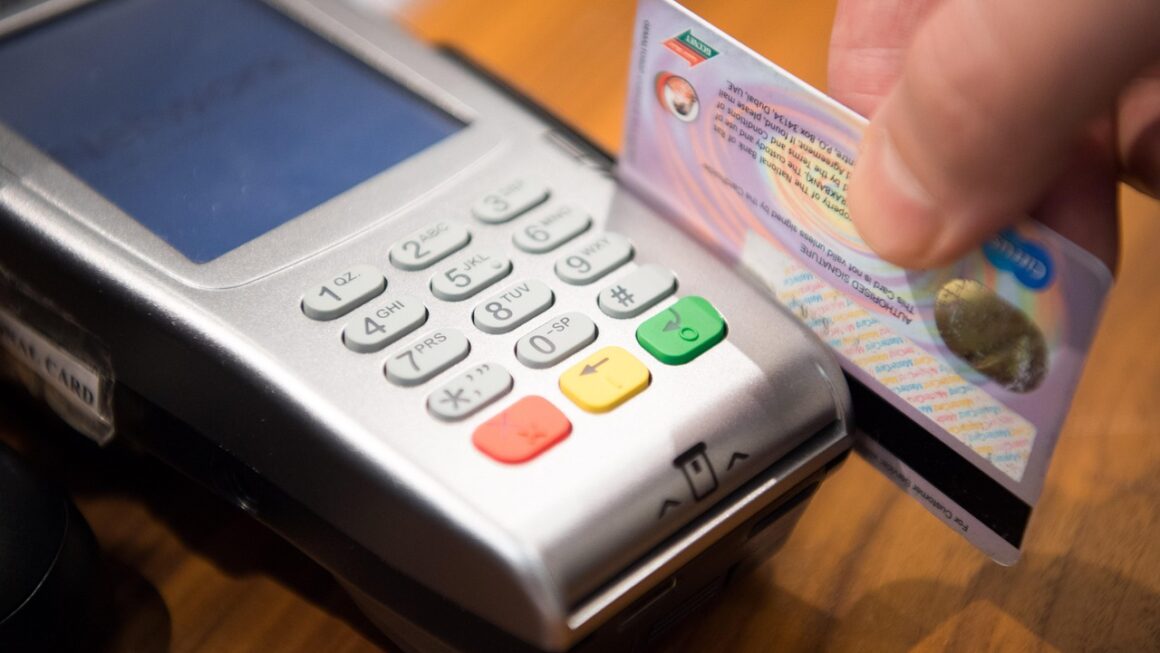Navigating the world of online payments can feel like traversing a complex maze. For businesses, both large and small, accepting payments seamlessly and securely is paramount to success. A crucial component in this process is the payment gateway – the technology acting as the intermediary between your website or application and your customer’s bank or card issuer. Choosing the right payment gateway can significantly impact your customer experience, security, and ultimately, your bottom line. This comprehensive guide will explore the ins and outs of payment gateways, helping you make informed decisions for your business.
What is a Payment Gateway?
Defining the Payment Gateway
A payment gateway is a technology that authorizes credit card or direct payments processing for e-businesses, online retailers, bricks and clicks, or traditional brick and mortar. Think of it as the virtual equivalent of a point-of-sale (POS) terminal in a physical store. It securely transmits transaction data between a customer’s payment method (like a credit card) and the merchant’s bank account, verifying funds and completing the purchase.
How Payment Gateways Work: A Step-by-Step Breakdown
The payment gateway process generally follows these steps:
- Customer Initiates Payment: The customer enters their payment information on your website or application.
- Encryption and Secure Transmission: The payment gateway encrypts the sensitive data (card number, expiry date, CVV) and securely transmits it to the acquiring bank.
- Bank Verification: The acquiring bank sends the transaction details to the card network (Visa, Mastercard, etc.) and then to the customer’s issuing bank.
- Authorization or Denial: The issuing bank either approves or declines the transaction based on available funds and other factors.
- Response to Merchant: The payment gateway receives the authorization or denial message from the issuing bank and forwards it to the merchant’s website or application.
- Transaction Completion: If authorized, the payment is processed, and the funds are transferred from the customer’s account to the merchant’s account (settlement).
Types of Payment Gateways
Payment gateways come in different shapes and sizes, each offering various levels of integration and control. Understanding these types is essential for choosing the right fit for your business:
- Hosted Payment Gateways: Customers are redirected to the payment gateway’s website (e.g., PayPal, Worldpay) to complete the transaction. This simplifies security and compliance for the merchant, as the gateway handles the sensitive data. Example: Using a “Pay with PayPal” button. Benefit: Reduces your PCI DSS compliance burden.
- Integrated Payment Gateways: Payment processing happens directly on your website or application. This provides a seamless user experience but requires a higher level of security and PCI DSS compliance. Example: A custom checkout flow where customers enter card details directly on your site. Benefit: Greater control over the customer experience and branding.
- API-Integrated Payment Gateways: These gateways offer an API (Application Programming Interface) that allows developers to build custom payment solutions tailored to their specific needs. Example: Building a subscription management platform that automatically charges recurring fees. Benefit: Highly customizable and scalable.
Key Features to Look for in a Payment Gateway
Security and Compliance
Security should be your top priority when selecting a payment gateway. Look for the following features:
- PCI DSS Compliance: The payment gateway should be certified as compliant with the Payment Card Industry Data Security Standard (PCI DSS).
- Tokenization: Replacing sensitive card data with a non-sensitive “token” to protect it during storage and transmission.
- Encryption: Using strong encryption protocols (e.g., TLS/SSL) to secure data transmission.
- Fraud Detection: Features to identify and prevent fraudulent transactions, such as AVS (Address Verification System) and CVV verification.
- 3D Secure: An authentication protocol (e.g., Verified by Visa, Mastercard SecureCode) that adds an extra layer of security by requiring customers to verify their identity with their card issuer.
Transaction Management
A robust payment gateway will offer features to manage your transactions effectively:
- Reporting and Analytics: Access to detailed reports on transaction history, sales trends, and other key metrics.
- Refund Processing: Easy-to-use tools for issuing refunds to customers.
- Recurring Billing: Automated billing for subscription-based businesses. Example: Setting up automatic monthly payments for a software subscription.
- Multiple Currency Support: Ability to accept payments in different currencies. Essential if you serve an international customer base.
- Customer Support: Reliable and responsive customer support to address any issues or questions.
Integration and Compatibility
Consider how well the payment gateway integrates with your existing systems:
- Website Platform Compatibility: Does the gateway integrate seamlessly with your e-commerce platform (e.g., Shopify, WooCommerce, Magento)?
- API Availability: Does the gateway offer a well-documented API for custom integrations?
- Mobile Payment Support: Does the gateway support mobile payment options (e.g., Apple Pay, Google Pay)?
- Accounting Software Integration: Ability to integrate with accounting software like QuickBooks or Xero to streamline financial management.
Choosing the Right Payment Gateway: Factors to Consider
Business Type and Size
The best payment gateway for your business will depend on its specific needs and characteristics:
- Startups: May benefit from simple, easy-to-integrate solutions with low setup costs, even if the transaction fees are slightly higher.
- Small to Medium-Sized Businesses (SMBs): Need a balance between cost-effectiveness, security, and feature-richness.
- Large Enterprises: Require highly customizable and scalable solutions with advanced security features and robust reporting capabilities.
Pricing and Fees
Payment gateways charge different types of fees, so it’s essential to understand the cost structure:
- Setup Fees: A one-time fee to set up your account. Some gateways waive this fee.
- Transaction Fees: A percentage of each transaction plus a fixed fee (e.g., 2.9% + $0.30).
- Monthly Fees: A recurring fee for using the gateway’s services.
- Chargeback Fees: Fees charged when a customer disputes a transaction. These can range from $15 to $50.
- International Transaction Fees: Higher fees applied to transactions involving international customers or currencies.
Customer Experience
The payment gateway should provide a smooth and user-friendly experience for your customers:
- Seamless Checkout Process: A simple and intuitive checkout flow that minimizes friction.
- Mobile Optimization: A mobile-friendly payment page.
- Variety of Payment Options: Support for different payment methods (e.g., credit cards, debit cards, digital wallets).
- Clear and Concise Error Messages: Helpful error messages that guide customers if they encounter any issues during checkout.
Popular Payment Gateways: A Comparison
Here’s a brief overview of some popular payment gateways:
- PayPal: A widely used and trusted payment gateway with a large user base. Good for both small businesses and larger enterprises.
- Stripe: A developer-friendly gateway with a robust API and a wide range of features. Ideal for businesses that require custom integrations.
- Square: A popular choice for businesses that need both online and in-person payment processing. Integrates seamlessly with Square’s POS system.
- Authorize.net: A long-standing and reliable gateway that offers a wide range of features and integrations. Good for businesses that need a secure and dependable solution.
- Braintree: A PayPal service that offers a customizable payment gateway with advanced features like recurring billing and fraud protection.
For example, a small online store selling handmade crafts might find PayPal or Square to be sufficient due to their ease of setup and integration with popular e-commerce platforms. A software company with complex subscription billing needs would likely prefer Stripe or Braintree due to their flexible APIs and robust recurring billing features.
Optimizing Your Payment Gateway for Conversions
Minimizing Checkout Friction
A smooth checkout process is crucial for maximizing conversions. Here are some tips:
- Offer Guest Checkout: Allow customers to make purchases without creating an account.
- Simplify the Form: Minimize the number of required fields.
- Use Autofill: Enable autofill functionality to speed up the process.
- Provide Clear Instructions: Give clear and concise instructions on how to complete the payment.
- Display Security Badges: Show trust badges to reassure customers that their information is secure.
Offering Multiple Payment Options
Giving customers a variety of payment options can increase conversions:
- Accept Major Credit Cards: Visa, Mastercard, American Express, Discover.
- Support Digital Wallets: Apple Pay, Google Pay, PayPal.
- Offer Local Payment Methods: Include payment methods popular in the countries where you do business. For example, iDEAL in the Netherlands or Sofort in Germany.
Providing Transparent Pricing
Be upfront about all fees and charges:
- Clearly Display Shipping Costs: Show shipping costs early in the checkout process.
- Avoid Hidden Fees: Don’t surprise customers with unexpected fees at the end of the checkout.
- Offer Discounts and Promotions: Incentivize purchases with discounts and promotions.
Conclusion
Choosing the right payment gateway is a critical decision that can impact your business’s success. By understanding the different types of gateways, key features, pricing structures, and integration options, you can select a solution that meets your specific needs and helps you provide a seamless and secure payment experience for your customers. Remember to prioritize security, compliance, and customer experience when making your decision, and continuously monitor your payment gateway’s performance to optimize conversions and minimize fraud. By carefully evaluating your options and staying informed about the latest payment trends, you can confidently navigate the world of online payments and build a thriving online business.




